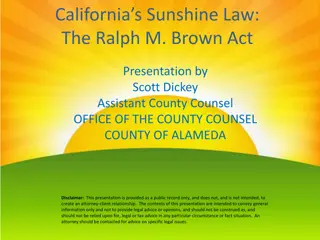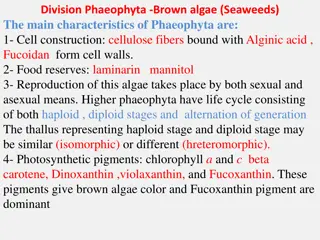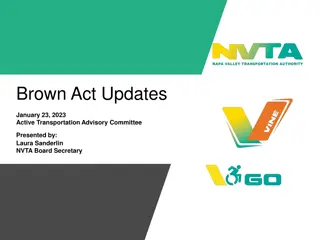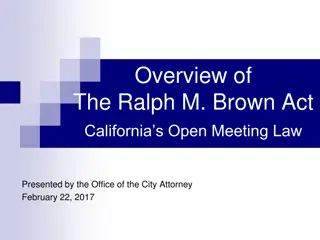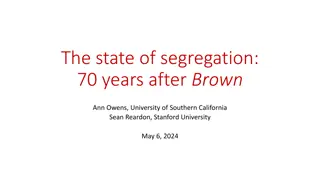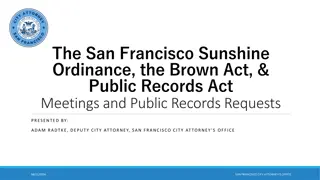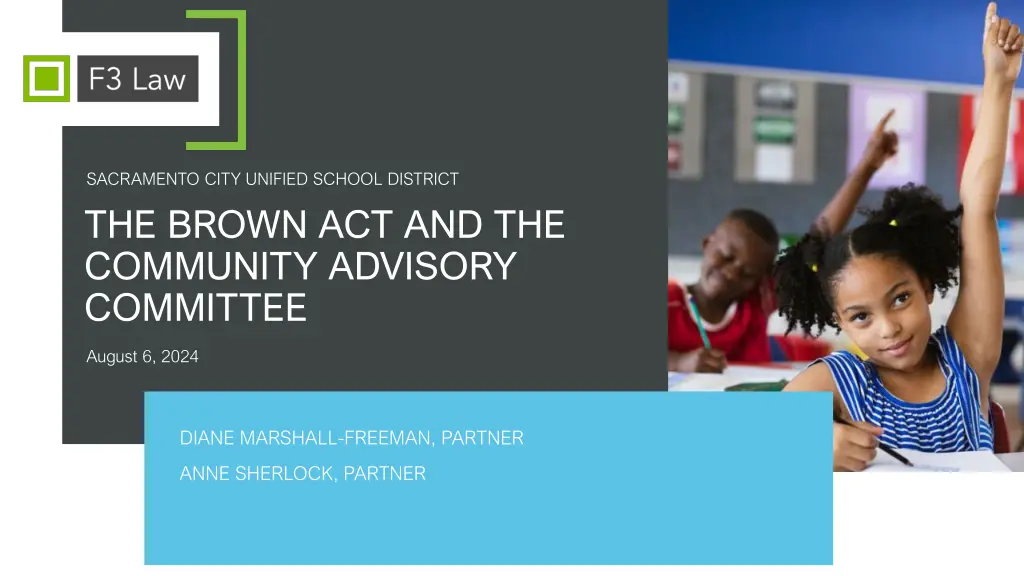
Understanding Sacramento City Unified School District Community Advisory Committee
Explore the purpose and duties of the Community Advisory Committee (CAC) in Sacramento City Unified School District, as outlined in the Brown Act. Learn about the CAC's role in advocating for special education programs and services, promoting parental involvement, and supporting individuals with exceptional needs. Discover how the CAC engages with the community to ensure effective education practices and opportunities for families.
Download Presentation

Please find below an Image/Link to download the presentation.
The content on the website is provided AS IS for your information and personal use only. It may not be sold, licensed, or shared on other websites without obtaining consent from the author. If you encounter any issues during the download, it is possible that the publisher has removed the file from their server.
You are allowed to download the files provided on this website for personal or commercial use, subject to the condition that they are used lawfully. All files are the property of their respective owners.
The content on the website is provided AS IS for your information and personal use only. It may not be sold, licensed, or shared on other websites without obtaining consent from the author.
E N D
Presentation Transcript
SACRAMENTO CITY UNIFIED SCHOOL DISTRICT THE BROWN ACT AND THE COMMUNITY ADVISORY COMMITTEE August 6, 2024 303.000.0000 D | hfulfrost@f3law.com 303.000.0000 D | hfulfrost@f3law.com DIANE MARSHALL-FREEMAN, PARTNER ANNE SHERLOCK, PARTNER
Agenda Agenda 1. Brief Overview of the Community Advisory Committee 2. Review of the Brown Act 3. Quick Quiz 4. Questions and Answers f3law.com | 2
COMMUNITY ADVISORY COMMITTEES
The CACs duties are specified in the Education Code and Local Plan. f3law.com | 5
WHAT IS THE PURPOSE OF THE CAC?
CAC Bylaws Article II Section 2:01: The purpose of the CAS shall be to bring together and support parents/guardians, students, professionals and community members to advocate for effective special education programs and services and to ensure families have meaningful opportunities to participate in education of their children at school and at home. Section 2:02: The CAC shall act in support of individuals with special needs and their families who are served by the SCUSD by representing broad interests in the community and promoting maximum interaction of parents and community members with Special Education Department and the school district in accordance with the law. f3law.com | 7
CAC Duties - Education Code Six duties per Education Code section 56194: (1) Advise the SELPA in the development, amendment and review of the Local Plan; (2) Recommend priorities to be addressed in the Local Plan; (3) Assist in parent recruitment and parent education; (4) Encourage community involvement; (5) Support activities on behalf of individuals with exceptional needs; (6) Assist with parent awareness on school attendance; and (7) Supporting community involvement in the parent advisory committee to encourage the inclusion of parents of individuals with exceptional needs f3law.com | 9
Color Palette THE BROWN ACT
Brown Act Topics 1. Overview of Brown Act: What Is a Meeting? 2. Notice 3. Agenda 4. Public Comment 5. Voting 5. Running an Effective Meeting f3law.com | 11
Does the Brown Act Apply to the CAC? Yes. The Brown Act applies to public agencies and any body of the public agency created by statute or bylaw. The CAC is a legislative body subject to California s Open Meeting laws, commonly referred to as the Brown Act. The CAC is subject to Brown Act requirements, including provisions regarding notice and conduct of open public meetings. Should the CAC fail and/or refuse to adhere to the Brown Act, it is subject to potential misdemeanor charges unless it cures the error. f3law.com | 12
Local Plan and the Brown Act All board meetings of the CAC shall be held according to with the Brown Act. Announcements of CAC meetings and activities will be posted by the member LEA and on the SELPA website. f3law.com | 13
1. OVERVIEW OF THE BROWN ACT WHAT IS A MEETING?
LEGISLATIVE BODIES The CAC is a legislative body subject to California s Open Meeting laws, commonly referred to as the Brown Act f3law.com | 15
OPEN MEETINGS The Brown Act requires that all meetings of a legislative body be open to the public, except for authorized closed sessions. Purpose of meeting: To accomplish CAC business Provide public opportunities for questions and comments 16
Meeting Defined A meeting occurs whenever: A majority of the CAC members gather at same time and place To hear, discuss, or deliberate Upon any item that is within the subject matter jurisdiction of the council. (Gov. Code 54952.2; Ed. Code 56194) f3law.com | 17
Serial Meetings Prohibited Serial Meeting: Communications outside formal meeting, each of which involve less than a quorum, but collectively encompass a majority Gov. Code section 54952.2 A majority of the CAC members shall not, outside a meeting use a series of communications of any kind, directly or through intermediaries, to discuss, deliberate, or take action on any item that is within the subject matter jurisdiction of the legislative body. f3law.com | 18
Serial Meetings Exceptions Only exceptions: Members and/or officials may communicate outside of a public meeting in order to . . . Answer questions Provide information f3law.com | 19
Meetings Do Not Include Individual contact Public conferences Other local agency meetings Community meetings Social gatherings f3law.com | 20
General Constraints Majority of the CAC cannot discuss CAC business among themselves at non- meetings f3law.com | 21 f3law.com | 21
Agendas Agenda Description The agenda must contain a brief general description of each item of business to be transacted or discussed at the meeting Generally, not to exceed 20 words Agenda must be posted At least 72 hours prior to holding a council meeting. At a location freely accessible to the public Agenda must also be posted on a school district s Internet Website f3law.com | 23
Placement of Items on Agenda Action and Discussion of Items The CAC may not discuss or take action on an item not appearing on the agenda except: To respond to statements made or questions posed by the public during the public comment section Be careful To ask questions of staff or the public for clarification (cont d) . . . Members of the public, including CAC members, may ask to have a specific matter placed on a future agenda General process Reviewed by CAC Chairperson Decide if within subject matter of council No right to demand that requested item be action item f3law.com | 24
Public Participation and Comment Regular meeting: Members of the public must be provided an opportunity to address the legislative body on any item within the subject matter jurisdiction of the CAC Special meeting: Public provided an opportunity to address the CAC on any item described in the notice f3law.com | 25
Public Participation and Comment (contd) The CAC may not prohibit public criticism of the policies, procedures, programs, or services of the agency, or the acts or omissions of the CAC f3law.com | 26
Brown Act Violations Misdemeanor: For CAC members to attend a CAC meeting where action is taken in violation of The Brown Act, where the member intends to deprive public of information which the member knows the public is entitled to receive The District Attorney, or any interested person, may bring a civil action to stop or prevent violations or to have CAC action taken in violation declared null and void f3law.com | 27
Cure or Correct Demands Before bringing the action, the CAC must be given notice and an opportunity to correct the violation Prevailing plaintiff may be entitled to costs and attorney s fees f3law.com | 28
3. RUNNING AN EFFECTIVE MEETING
Running an Effective Meeting Call the meeting to order at the appointed time Announce the business to come before the CAC in its proper order Conduct the meeting and help ensure compliance with The Brown Act Recognize persons who desire to speak, and protect the speaker who has the floor from disturbance or interference Restrict discussion to the topic before the CAC f3law.com | 30
Tips For Effective Communications Between CAC Members Be respectful; every member will have an opportunity to speak at an appropriate time Disagreement and respectful debate between CAC members at CAC meetings is appropriate; open disagreement outside of meetings can be divisive and damaging to the CAC f3law.com | 31
Business Communications & Media Relations Education Technology Employment Law Facilities & Construction Governance & Leadership Government Affairs & Public Policy Interscholastic Activities Investigations Labor Relations & Negotiations Litigation Next Level Client Services Real Estate & Property Special Education Student Rights & Discipline Title IX Virtual Learning Inland Empire Fresno Los Angeles Midwest Oakland Pacific Northwest Sacramento San Diego 33
Thank you Thank you

